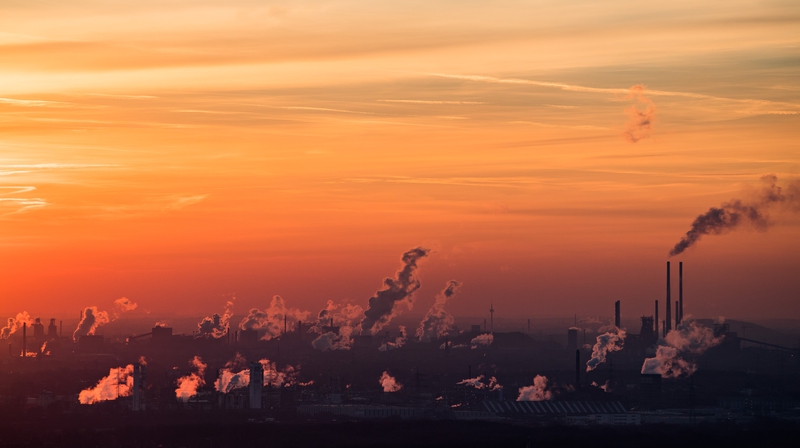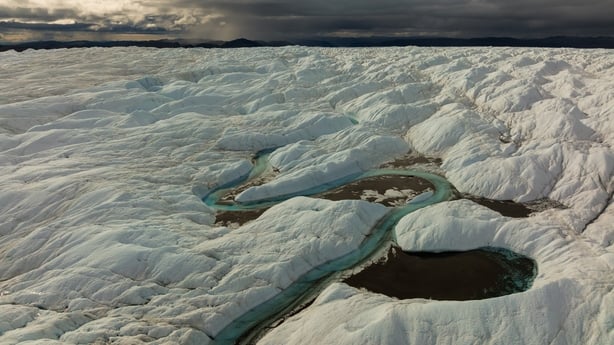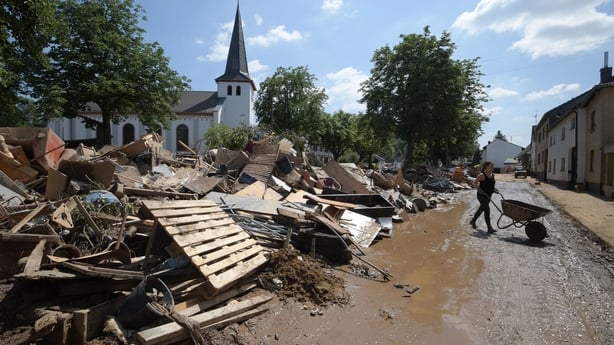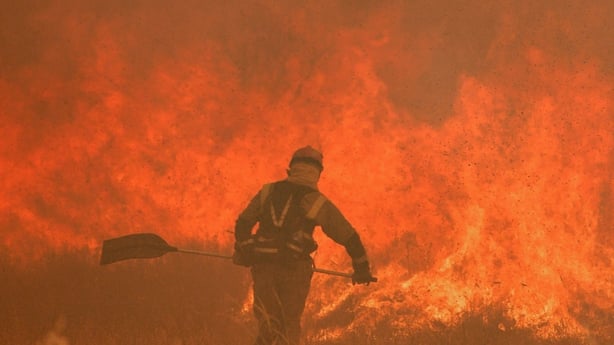The World Meteorological Organisation says Europe presents a "live picture of a warming world".
by Jack Peat
2022-11-02

Temperatures have risen by more than twice the global average in Europe over the past 30 years, UN experts on weather and climate have said.
A report from the World Meteorological Organisation (WMO) said temperatures had warmed significantly since 1991, rising at an average of about 0.5C a decade, making it the fastest warming continent.
The report focuses on 2021 when Europe was hit by devastating floods, storms and other weather and climate events, which claimed lives, directly affected more than half a million people and caused 50 billion dollars of damage.
With 2022 seeing more climate damage from heatwaves, drought and wildfire, the WMO warned Europe was a “live picture of a warming world” that shows that even well-prepared societies are not safe from extreme weather events.
The State of the Climate in Europe report for 2021, produced jointly with the European Union’s Copernicus Climate Change Service, also reveals that Alpine glaciers lost 30m (nearly 100 ft) in ice thickness from 1997-2021.
Greenland’s ice sheet is melting, contributing to accelerating sea level rise – and in summer 2021 saw a melt event and rainfall for the first time ever at its highest point – Summit station.
There were also droughts and high temperatures which fuelled significant wildfires, particularly in Turkey, Italy and Greece, and summer heatwaves saw temperatures reach 48.8C near Syracuse in Sicily, in August – a provisional record.
The report shows that some European countries are having success in cutting the greenhouse gas emissions driving global warming, with EU climate pollution falling 31 per cent between 1990 and 2020, and a target for 2030 of 55 per cent cuts.
But recent reports from other UN bodies have shown how far off track the world is to limiting temperature rises to well below 2C or 1.5C to avoid the worst impacts of climate change, as countries agreed under the Paris Agreement in 2015.
RelatedPosts
Householder suffers carbon monoxide poisoning after starting a fire in a bucket to save money
Susanna Reid has to apologise after GMB guest calls Matt Hancock a ‘d***head’
Matt Hancock set to join I’m A Celebrity line-up in Australia
BP profits more than double to £7.1bn in three months
WMO secretary-general Petteri Taalas said: “Europe presents a live picture of a warming world and reminds us that even well-prepared societies are not safe from impacts of extreme weather events.
“This year, like 2021, large parts of Europe have been affected by extensive heatwaves and drought, fuelling wildfires. In 2021, exceptional floods caused death and devastation.”
He added: “On the mitigation side, the good pace in reducing greenhouse gases emissions in the region should continue and ambition should be further increased.
“Europe can play a key role towards achieving a carbon neutral society by the middle of the century to meet the Paris Agreement.”
2022-11-02

Temperatures have risen by more than twice the global average in Europe over the past 30 years, UN experts on weather and climate have said.
A report from the World Meteorological Organisation (WMO) said temperatures had warmed significantly since 1991, rising at an average of about 0.5C a decade, making it the fastest warming continent.
The report focuses on 2021 when Europe was hit by devastating floods, storms and other weather and climate events, which claimed lives, directly affected more than half a million people and caused 50 billion dollars of damage.
With 2022 seeing more climate damage from heatwaves, drought and wildfire, the WMO warned Europe was a “live picture of a warming world” that shows that even well-prepared societies are not safe from extreme weather events.
The State of the Climate in Europe report for 2021, produced jointly with the European Union’s Copernicus Climate Change Service, also reveals that Alpine glaciers lost 30m (nearly 100 ft) in ice thickness from 1997-2021.
Greenland’s ice sheet is melting, contributing to accelerating sea level rise – and in summer 2021 saw a melt event and rainfall for the first time ever at its highest point – Summit station.
There were also droughts and high temperatures which fuelled significant wildfires, particularly in Turkey, Italy and Greece, and summer heatwaves saw temperatures reach 48.8C near Syracuse in Sicily, in August – a provisional record.
The report shows that some European countries are having success in cutting the greenhouse gas emissions driving global warming, with EU climate pollution falling 31 per cent between 1990 and 2020, and a target for 2030 of 55 per cent cuts.
But recent reports from other UN bodies have shown how far off track the world is to limiting temperature rises to well below 2C or 1.5C to avoid the worst impacts of climate change, as countries agreed under the Paris Agreement in 2015.
RelatedPosts
Householder suffers carbon monoxide poisoning after starting a fire in a bucket to save money
Susanna Reid has to apologise after GMB guest calls Matt Hancock a ‘d***head’
Matt Hancock set to join I’m A Celebrity line-up in Australia
BP profits more than double to £7.1bn in three months
WMO secretary-general Petteri Taalas said: “Europe presents a live picture of a warming world and reminds us that even well-prepared societies are not safe from impacts of extreme weather events.
“This year, like 2021, large parts of Europe have been affected by extensive heatwaves and drought, fuelling wildfires. In 2021, exceptional floods caused death and devastation.”
He added: “On the mitigation side, the good pace in reducing greenhouse gases emissions in the region should continue and ambition should be further increased.
“Europe can play a key role towards achieving a carbon neutral society by the middle of the century to meet the Paris Agreement.”
Europe temperatures rise more than twice global average - UN
Wednesday, 2 Nov 2022

The report cautioned that temperatures would likely continue to rise across Europe at a rate exceeding global mean temperature changes
Temperatures in Europe have increased at more than twice the global average over the past three decades, showing the fastest rise of any continent on earth, the United Nations has said.
The European region has on average seen temperatures rise 0.5C each decade since 1991, the UN's World Meteorological Organization and the European Union's Copernicus Climate Change Service found in a joint report.
As a result, Alpine glaciers lost 100ft in ice thickness between 1997 and 2021, while the Greenland ice sheet is swiftly melting and contributing to accelerating sea level rise.
Last year, Greenland experienced melting and the first-ever recorded rainfall at its highest point.
The report also cautioned that regardless of future levels of global warming, temperatures would likely continue to rise across Europe at a rate exceeding global mean temperature changes.
"Europe presents a live picture of a warming world and reminds us that even well-prepared societies are not safe from impacts of extreme weather events," WMO chief Petteri Taalas said in a statement.

Greenland experienced melting and the first-ever recorded rainfall at its highest point
WMO splits the world into six regions, with the European region covering 50 countries and including half of the swiftly warming Arctic, which is not a continent in its own right.
Within Antarctica - which is a continent but falls outside the six WMO-defined regions - only the West Antarctic Peninsula part is seeing rapid warming.
In Ireland, mean temperatures were above their long-term average all across the country throughout last month.
Deviations ranged from a rise of 1.2C above the average at Malin Head in Co Donegal, to 2.2C at Dunsany in Co Meath and Casement Aerodrome in Dublin.
The highest temperature in Ireland last month was recorded at Shannon Airport on 3 October, reaching 19.5C.
Four of Met Éireann's weather stations had their warmest October since 1995, another four had their warmest October since 2001, while five stations had their warmest October on record.
'Vulnerable'
The new report, released ahead of the UN's 27th conference on climate set to open in Egypt on Sunday, examined the situation in Europe up to and including 2021.
It found that last year, high-impact weather and climate events - mainly floods and storms - led to hundreds of deaths, directly affected more than half a million people and caused economic damage across Europe exceeding $50 billion.
Last year, high-impact weather and climate events led to hundreds of deaths
At the same time, the report highlighted some positives, including the success of many European countries in slashing greenhouse gas emissions.
Across the EU, such emissions decreased by nearly a third between 1990 and 2020, and the bloc has set a net 55% reduction target for 2030.
Europe is also one of the most advanced regions when it comes to cross-border cooperation towards climate change adaptation, the report said.
It also hailed Europe's world-leading deployment of early warning systems, providing protection for about 75% of the population, and said its heat-health action plans had saved many lives.
"European society is vulnerable to climate variability and change," said Carlo Buontempo, head of Copernicus's European Centre of Medium-range Weather Forecasts (ECMWF).
"But Europe is also at the forefront of the international effort to mitigate climate change and to develop innovative solutions to adapt to the new climate Europeans will have to live with."
Health concerns
Yet, the continent is facing formidable challenges.
"This year, like 2021, large parts of Europe have been affected by extensive heatwaves and drought, fuelling wildfires," Mr Taalas said, also decrying "death and devastation" from last year's "exceptional floods".
'Large parts of Europe have been affected by extensive heatwaves and drought, fuelling wildfire'
And going forward, the report cautioned that regardless of the greenhouse gas emissions scenario, "the frequency and intensity of hot extremes... are projected to keep increasing."
This is concerning, the report warned, given that the deadliest extreme climate events in Europe are heatwaves, especially in the west and south of the continent.
"The combination of climate change, urbanisation and population ageing in the region creates, and will further exacerbate, vulnerability to heat," the report said.
The shifting climate is also spurring other health concerns.
It has already begun altering the production and distribution of pollens and spores, which appear to be leading to increases in various allergies.
While more than 24% of adults living in the European region suffer from such allergies, including severe asthma, the proportion among children is 30-40% and rising, it said.
The warming climate is also causing more vector-borne diseases, with ticks moving into new areas bringing Lyme disease and tick-borne encephalitis.
Asian tiger mosquitos are also moving further north, carrying the risk of Zika, dengue and chikungunya, the report said.
Accreditation: AFP
Temperatures in Europe have increased at more than twice the global average over the past three decades, showing the fastest rise of any continent on earth, the United Nations has said.
The European region has on average seen temperatures rise 0.5C each decade since 1991, the UN's World Meteorological Organization and the European Union's Copernicus Climate Change Service found in a joint report.
As a result, Alpine glaciers lost 100ft in ice thickness between 1997 and 2021, while the Greenland ice sheet is swiftly melting and contributing to accelerating sea level rise.
Last year, Greenland experienced melting and the first-ever recorded rainfall at its highest point.
The report also cautioned that regardless of future levels of global warming, temperatures would likely continue to rise across Europe at a rate exceeding global mean temperature changes.
"Europe presents a live picture of a warming world and reminds us that even well-prepared societies are not safe from impacts of extreme weather events," WMO chief Petteri Taalas said in a statement.

Greenland experienced melting and the first-ever recorded rainfall at its highest point
WMO splits the world into six regions, with the European region covering 50 countries and including half of the swiftly warming Arctic, which is not a continent in its own right.
Within Antarctica - which is a continent but falls outside the six WMO-defined regions - only the West Antarctic Peninsula part is seeing rapid warming.
In Ireland, mean temperatures were above their long-term average all across the country throughout last month.
Deviations ranged from a rise of 1.2C above the average at Malin Head in Co Donegal, to 2.2C at Dunsany in Co Meath and Casement Aerodrome in Dublin.
The highest temperature in Ireland last month was recorded at Shannon Airport on 3 October, reaching 19.5C.
Four of Met Éireann's weather stations had their warmest October since 1995, another four had their warmest October since 2001, while five stations had their warmest October on record.
'Vulnerable'
The new report, released ahead of the UN's 27th conference on climate set to open in Egypt on Sunday, examined the situation in Europe up to and including 2021.
It found that last year, high-impact weather and climate events - mainly floods and storms - led to hundreds of deaths, directly affected more than half a million people and caused economic damage across Europe exceeding $50 billion.

Last year, high-impact weather and climate events led to hundreds of deaths
At the same time, the report highlighted some positives, including the success of many European countries in slashing greenhouse gas emissions.
Across the EU, such emissions decreased by nearly a third between 1990 and 2020, and the bloc has set a net 55% reduction target for 2030.
Europe is also one of the most advanced regions when it comes to cross-border cooperation towards climate change adaptation, the report said.
It also hailed Europe's world-leading deployment of early warning systems, providing protection for about 75% of the population, and said its heat-health action plans had saved many lives.
"European society is vulnerable to climate variability and change," said Carlo Buontempo, head of Copernicus's European Centre of Medium-range Weather Forecasts (ECMWF).
"But Europe is also at the forefront of the international effort to mitigate climate change and to develop innovative solutions to adapt to the new climate Europeans will have to live with."
Health concerns
Yet, the continent is facing formidable challenges.
"This year, like 2021, large parts of Europe have been affected by extensive heatwaves and drought, fuelling wildfires," Mr Taalas said, also decrying "death and devastation" from last year's "exceptional floods".

'Large parts of Europe have been affected by extensive heatwaves and drought, fuelling wildfire'
And going forward, the report cautioned that regardless of the greenhouse gas emissions scenario, "the frequency and intensity of hot extremes... are projected to keep increasing."
This is concerning, the report warned, given that the deadliest extreme climate events in Europe are heatwaves, especially in the west and south of the continent.
"The combination of climate change, urbanisation and population ageing in the region creates, and will further exacerbate, vulnerability to heat," the report said.
The shifting climate is also spurring other health concerns.
It has already begun altering the production and distribution of pollens and spores, which appear to be leading to increases in various allergies.
While more than 24% of adults living in the European region suffer from such allergies, including severe asthma, the proportion among children is 30-40% and rising, it said.
The warming climate is also causing more vector-borne diseases, with ticks moving into new areas bringing Lyme disease and tick-borne encephalitis.
Asian tiger mosquitos are also moving further north, carrying the risk of Zika, dengue and chikungunya, the report said.
Accreditation: AFP
No comments:
Post a Comment